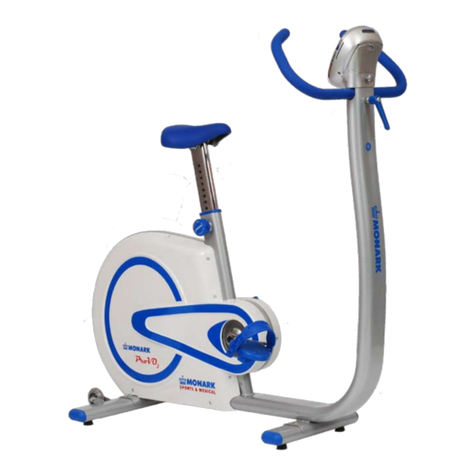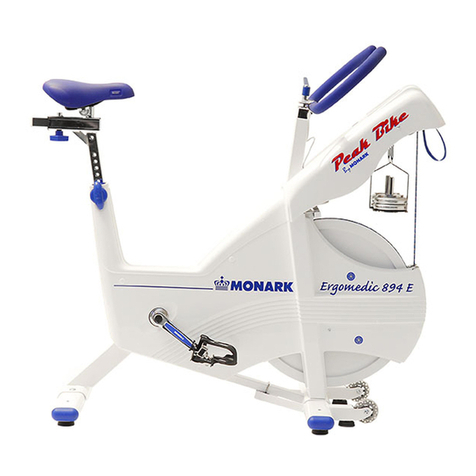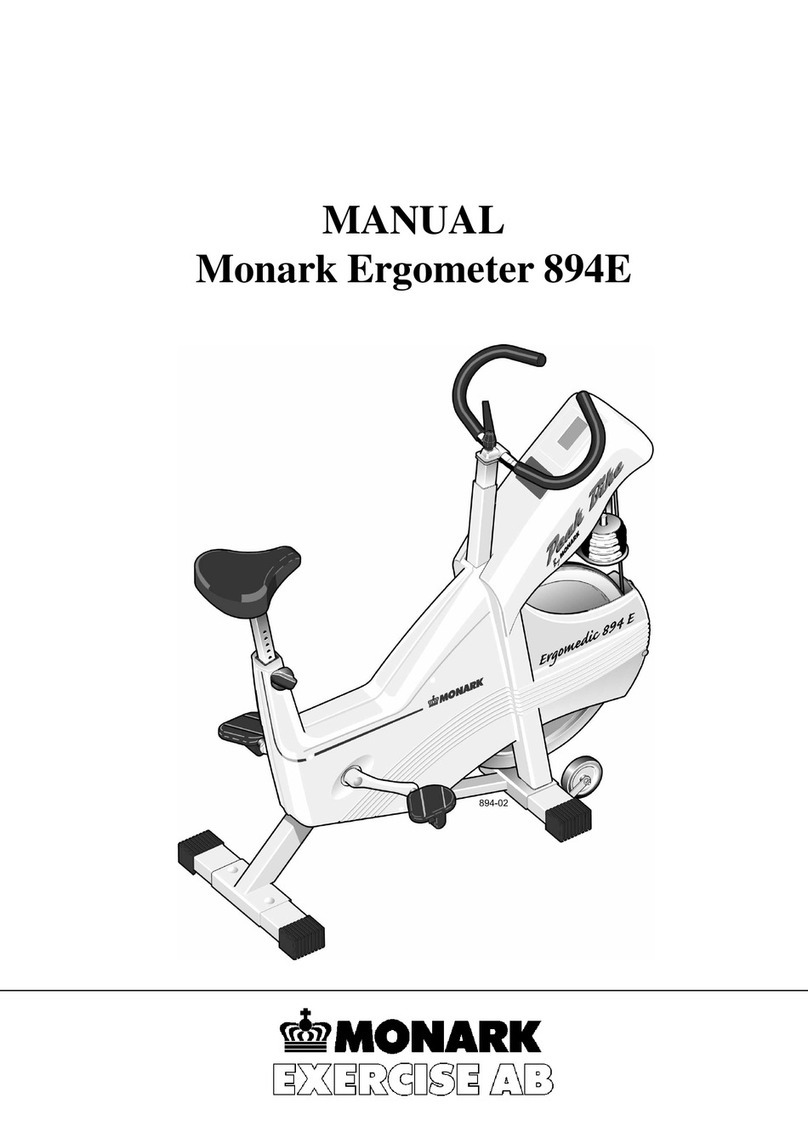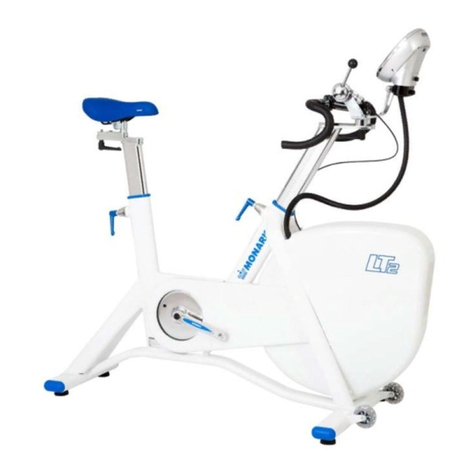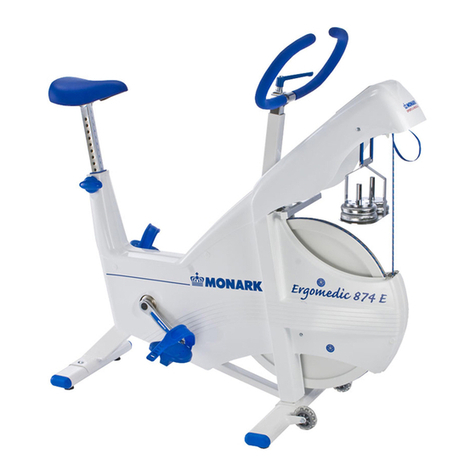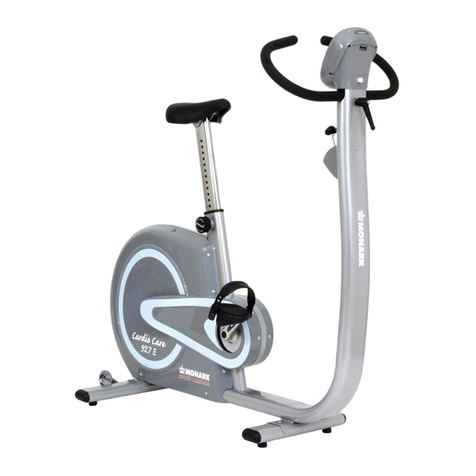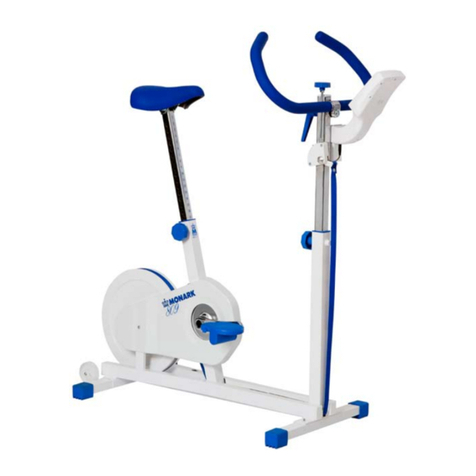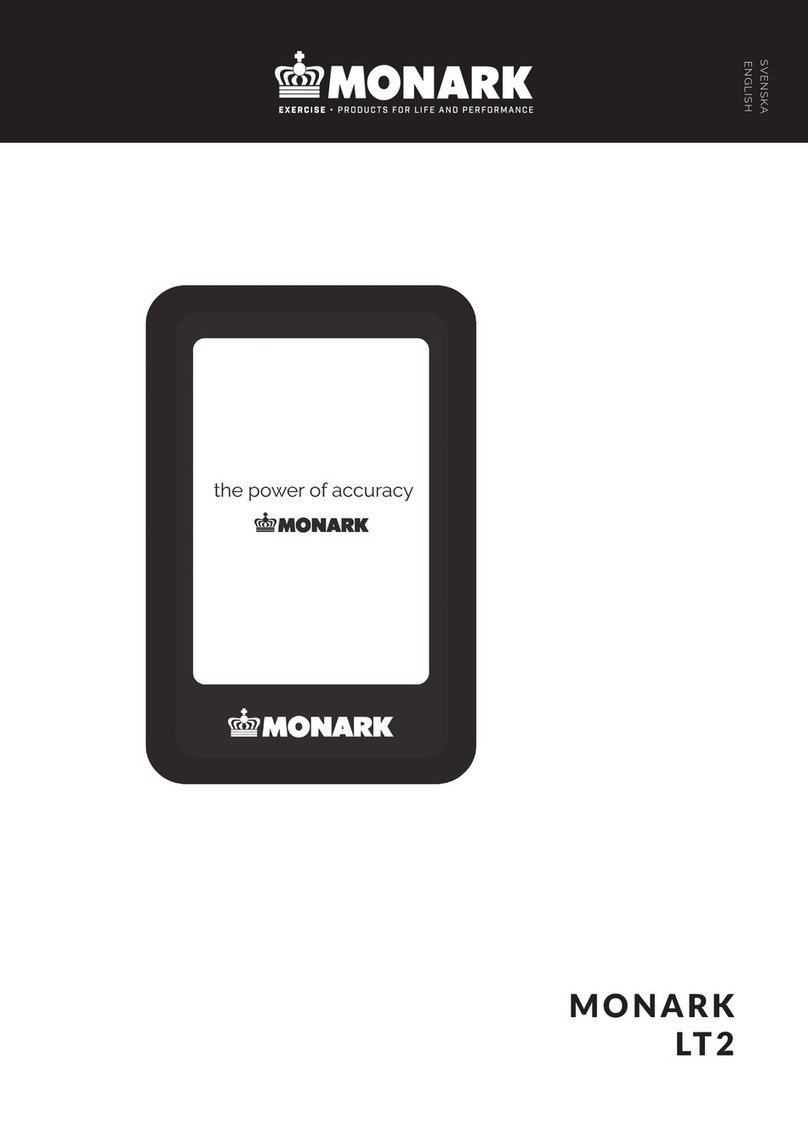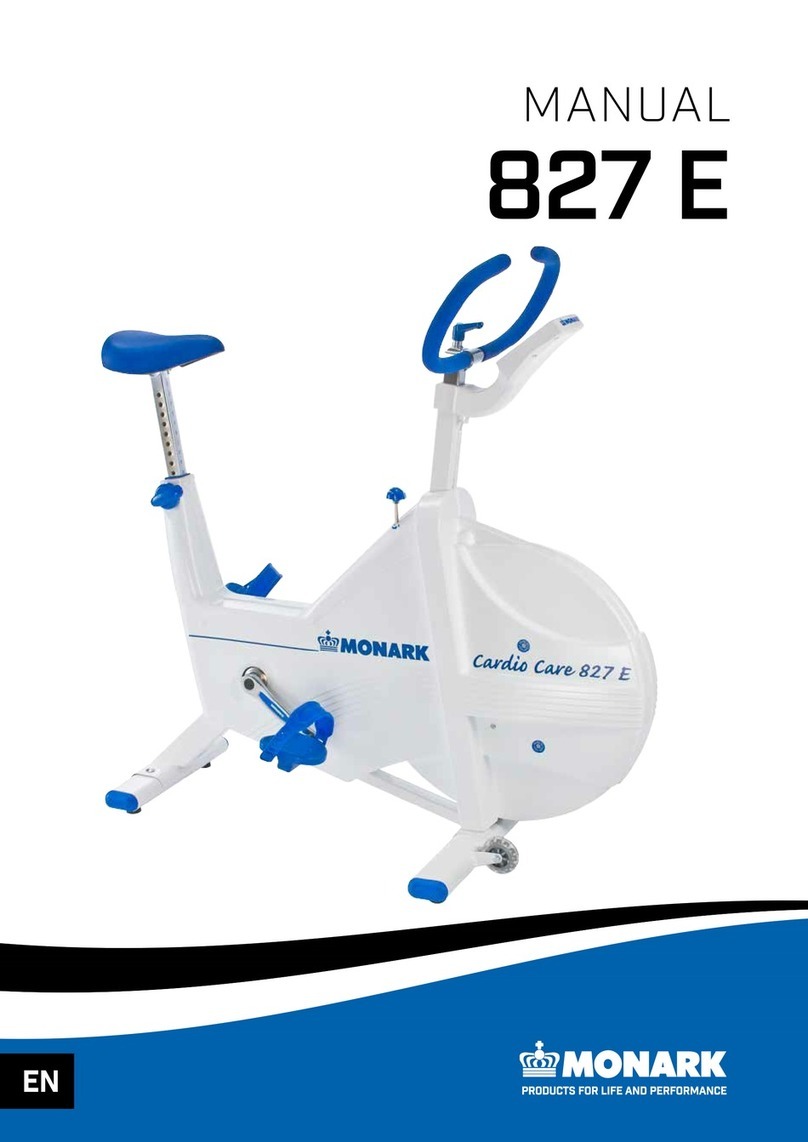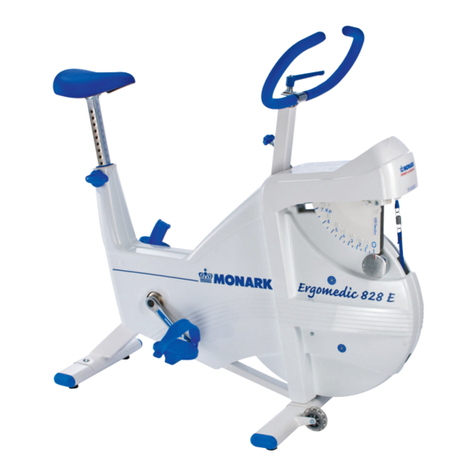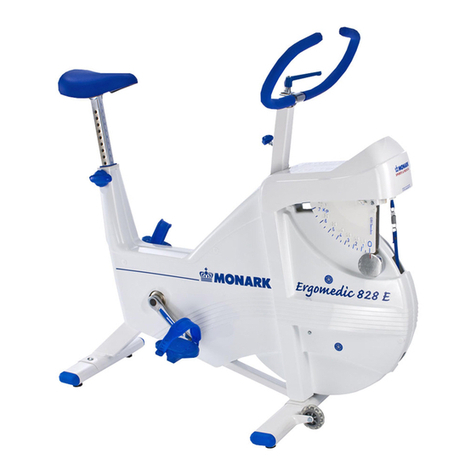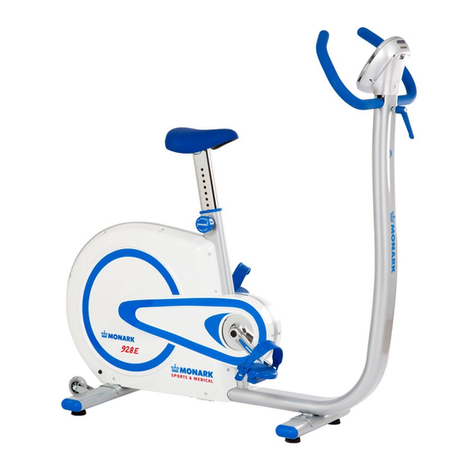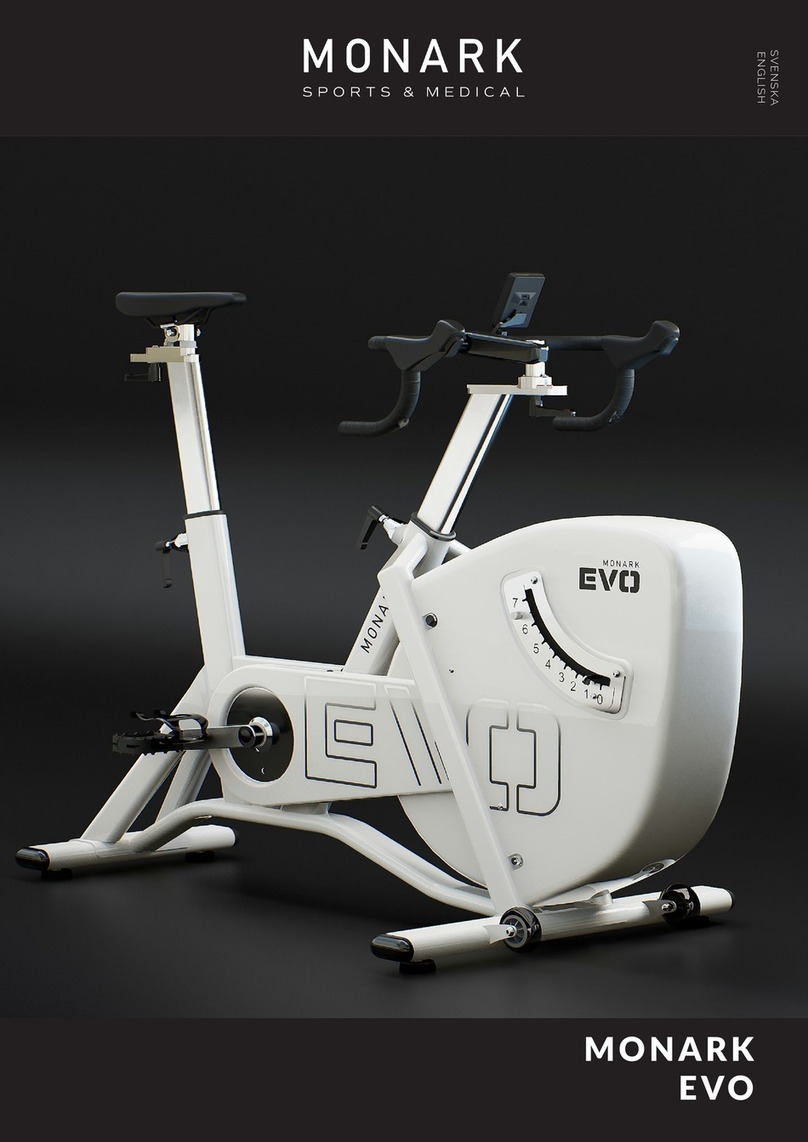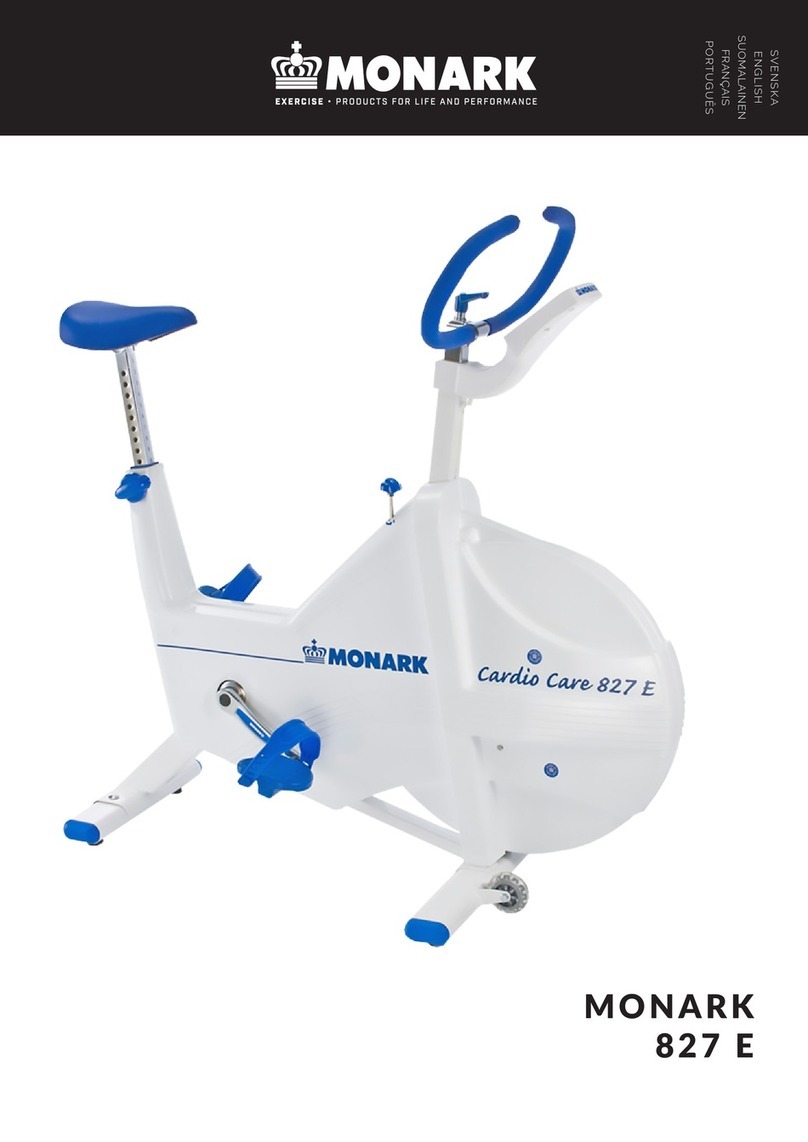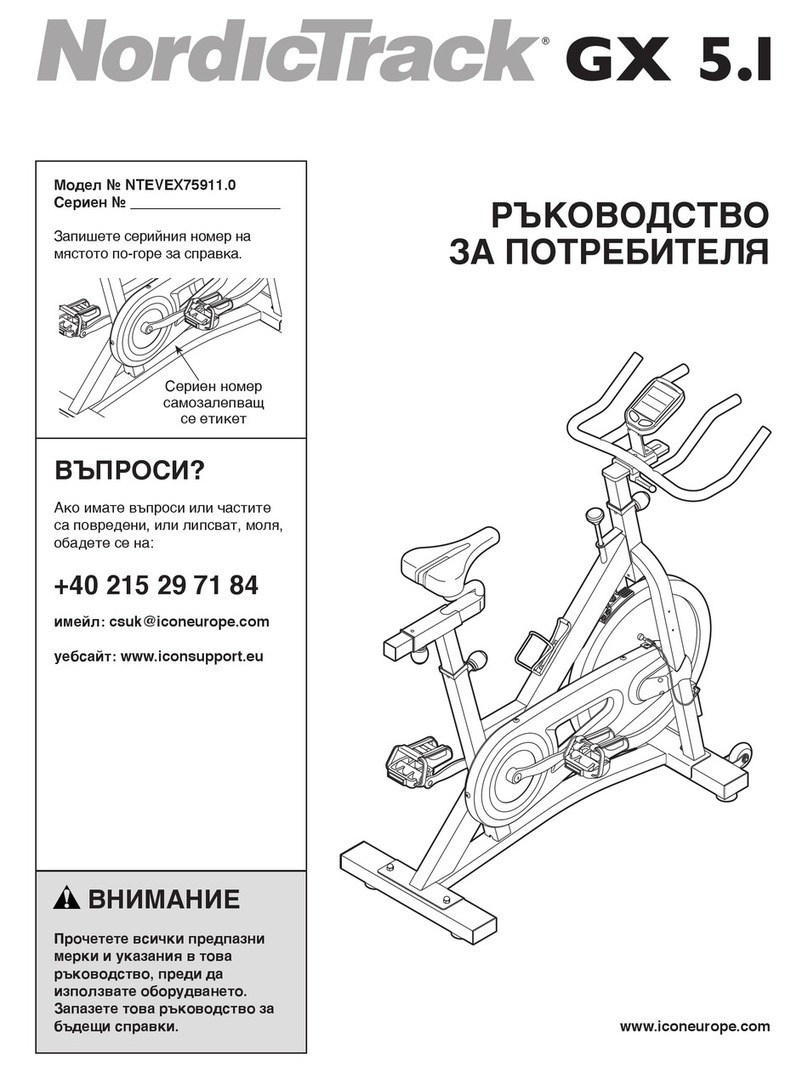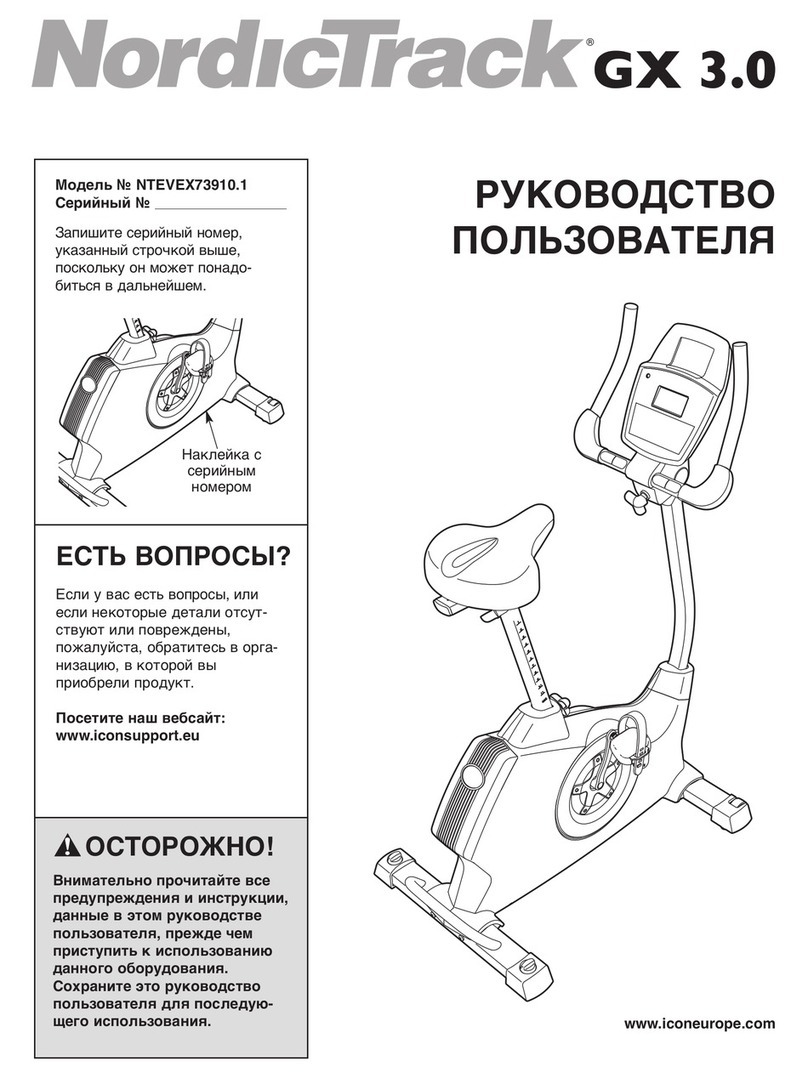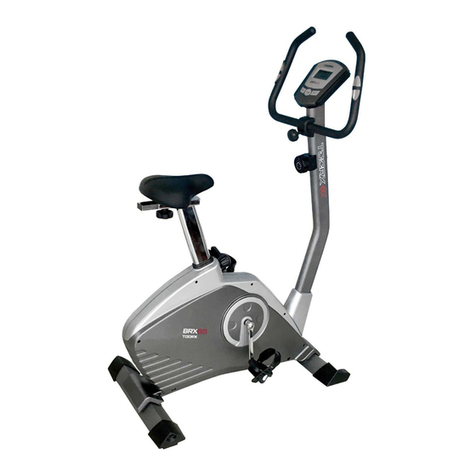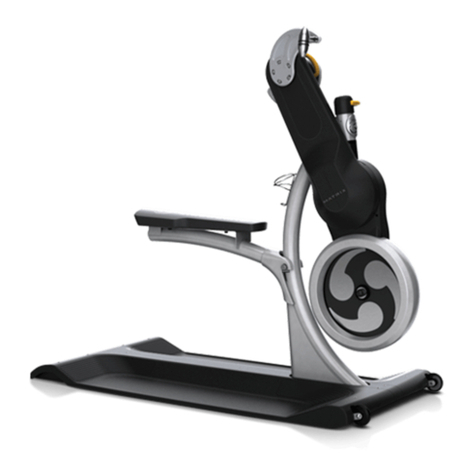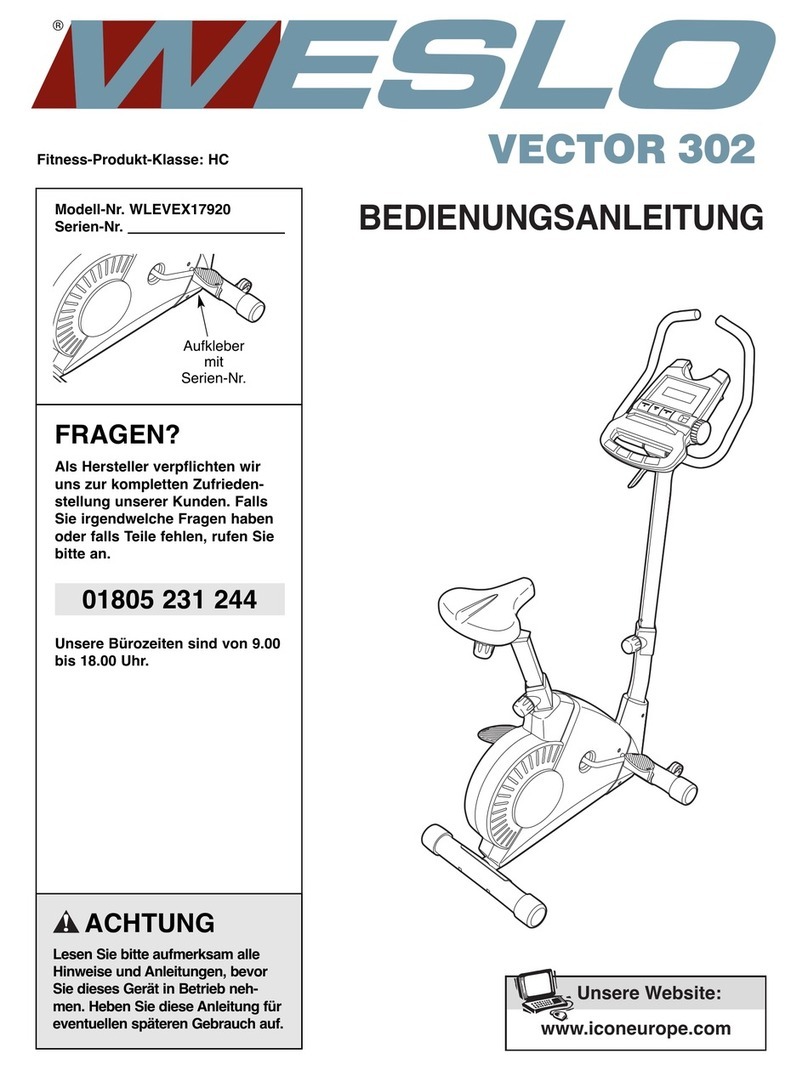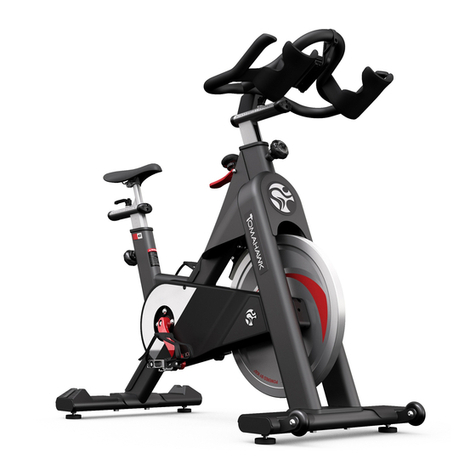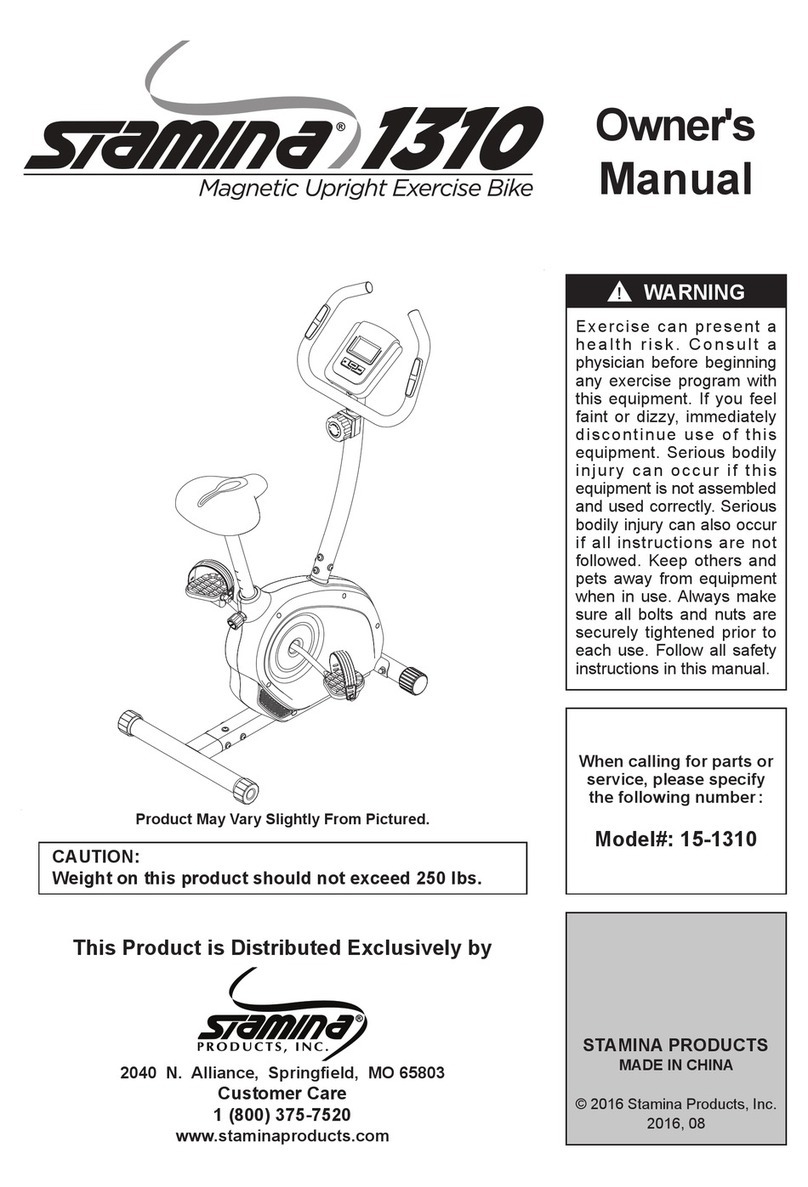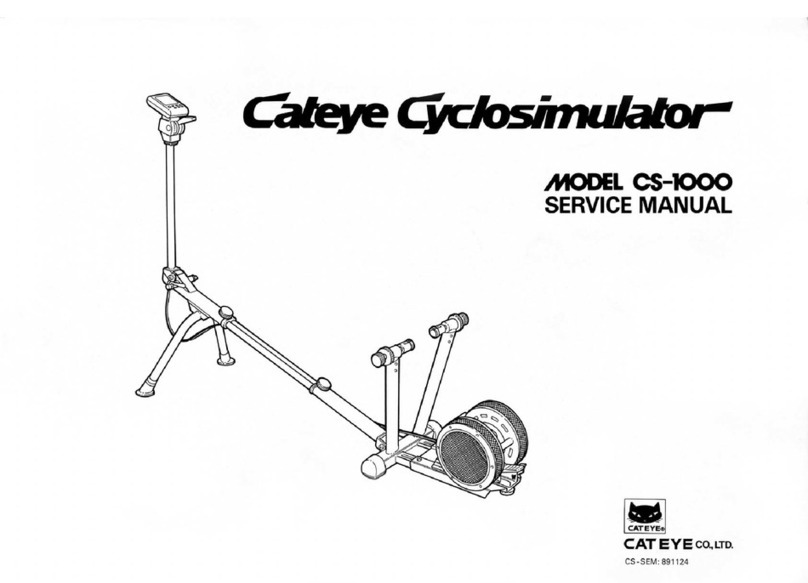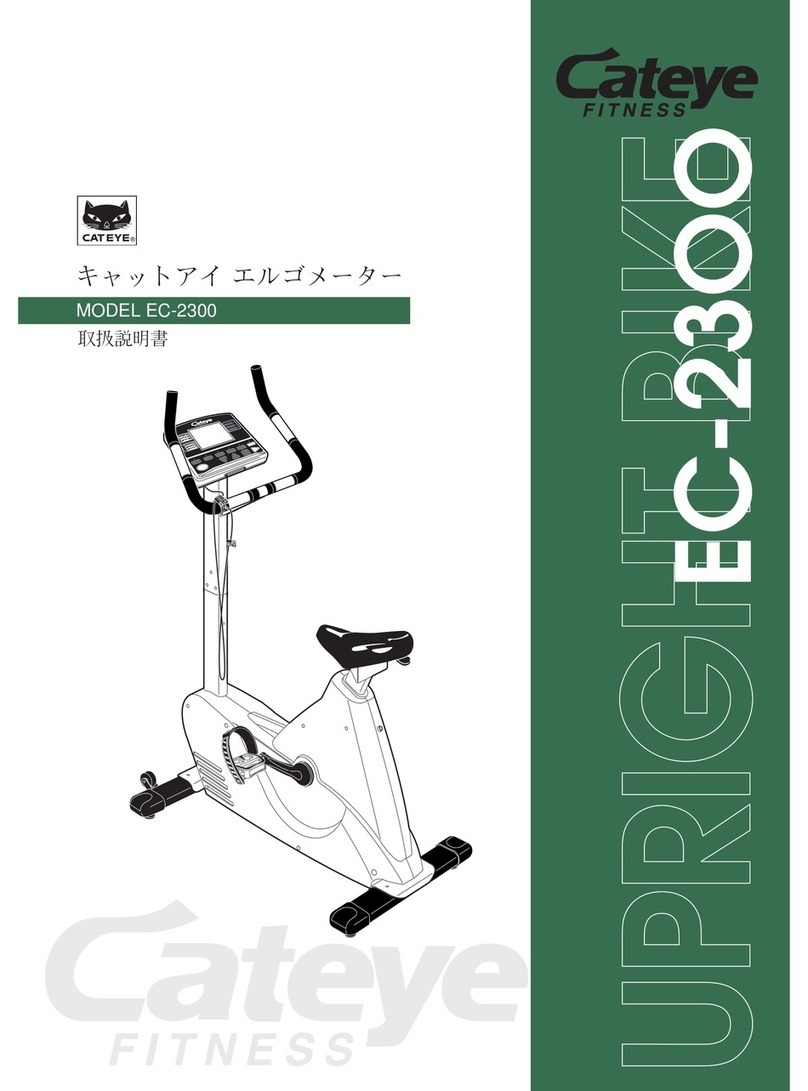
Monark Compact Rehab 871 E 9
Exercising
The human body is built for action – not for rest.
Once upon a time this was a necessity: the struggle for
survival demanded good physical condition. But opti-
mal function can only be achieved by regularly expo-
sing the heart, circulation, muscles, tendons, skeleton
and nervous system to some loading, i.e. training.
In the old days the body got its exercise both in work
and at leisure. In our modern society, however, machi-
nes have taken over an ever increasing share of the
tasks which were formerly accomplished with muscu-
lar power alone. Our life has at an accelerated tempo
been dominated by sitting, riding and lying. Thus, the
natural and vital stimulation that tissues and internal
organs receive through physical exercise has largely
disappeared. Certain tissues such as muscles, bone
and blood and also a number of bodily functions can
adapt to inactivity – and to stress. Studies have pro-
ved that if you use 30 minutes for exercise like brisk
walking, running, bicycling, swimming or skiing 2-3
times a week, your condition has been improved by
some 15 per cent after a few months. The efficiency of
the heart muscle will increase and joints and muscles
grow in strength. The capillary density increases in
the trained muscle and their enzymatic activities are
enhanced. The body adapts to the new demands. The
perceived exertion at a given rate of exercise becomes
reduced.
With increased physical activity fatness is concentra-
ted, the appetite functions “safer”, you can eat more
without risk for overweight and thereby the risk of
lack of important essential food nutrients decreases.
For many individuals the effect of habitual physical
activity also improves the wellbeing and it is a good
feeling to have a potential to cope with straining si-
tuations.
What kind of exercise to choose?
You should have fun when exercising. Choose so-
mething you find pleasure in doing regularly.
To get a good effect out of the training you should
choose a form of exercise that engages large muscle
groups. Then the demand of increased blood flow and
oxygen transport will be so great that heart will in-
crease its pump capacity. Jogging, calesthenics, aero-
bic dancing, bicycling, swimming, skiing and walking
are excellent examples of exercises meeting this requi-
rement.
In a few months you can get 10-15 years younger
If you cycle 30 minutes a few times a week you can
lower your condition age with 10-15 years! Scientifi-
cally this is described as a reduction on the biological
age. Externally, you are your usual self. Internally, ho-
wever, you feel much younger. In other words: You
can work harder. You feel more alert and healthy.
Your ability to handle stress and problems increases.
There are few better ways to improve your physical
condition than to cycle. It does not over-tax your
joints. It builds up your condition progressively and
at your own pace – and you can make your training
fit weather conditions.
Do I loose weight when I Cycling?
Yes! You do lose calories. A few miles on your bike
every day over one year, you will have lost the equi-
valent of 20 pounds of body fat. You will achieve best
results if you combine exercise with healthier eating.
A little less sugar, less butter on your bread or less
fat in your frying pan. And a few miles on your bike
every day. In a year you will have lost 20 pounds.
Do I get stronger?
Cycling strengthens the muscles of the back, abdo-
men and legs. Daily chores become easier. Cycling
also makes your heart stronger. Your pulse rate gets
lower even when you exert yourself a little extra. Re-
gular exercise also has a favourable influence on high
blood pressures.
How do I train?
Warm up 3-5 minutes with a low pedal resistance.1.
Pedal about 12 mph (20 km/h).
Increase the resistance until you feel the training2.
“somewhat hard”. Keep the speed for 2-5 minutes.
Get off the Exercise cycle and rest a few minutes.
Cycle again and then rest. Train at your own pace
and with a comfortable pedal resistance. After a
few weeks you can increase the resistance.
Before ending, pedal a few minutes with a light3.
resistance, in order to step down your training.
Total time about 30 minutes.
Strength training:
Give yourself a thorough warm-up.1.
Pedal with a heavy resistance for 5-10 seconds,2.
then rest 45-60 seconds. Repeat this 5-10 times.
It is a good idea to combine your cycle training with
gymnastics for 5 minutes, as this will give you a phy-
siologically well-balanced form of training.
Elderly people and physically weak persons should
consult a doctor before starting their training.
Exercising
